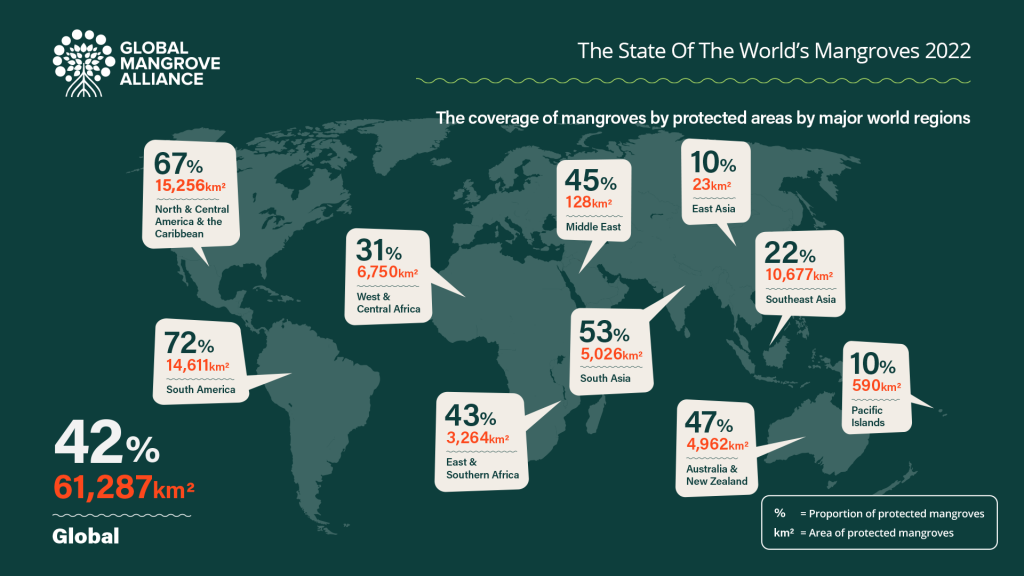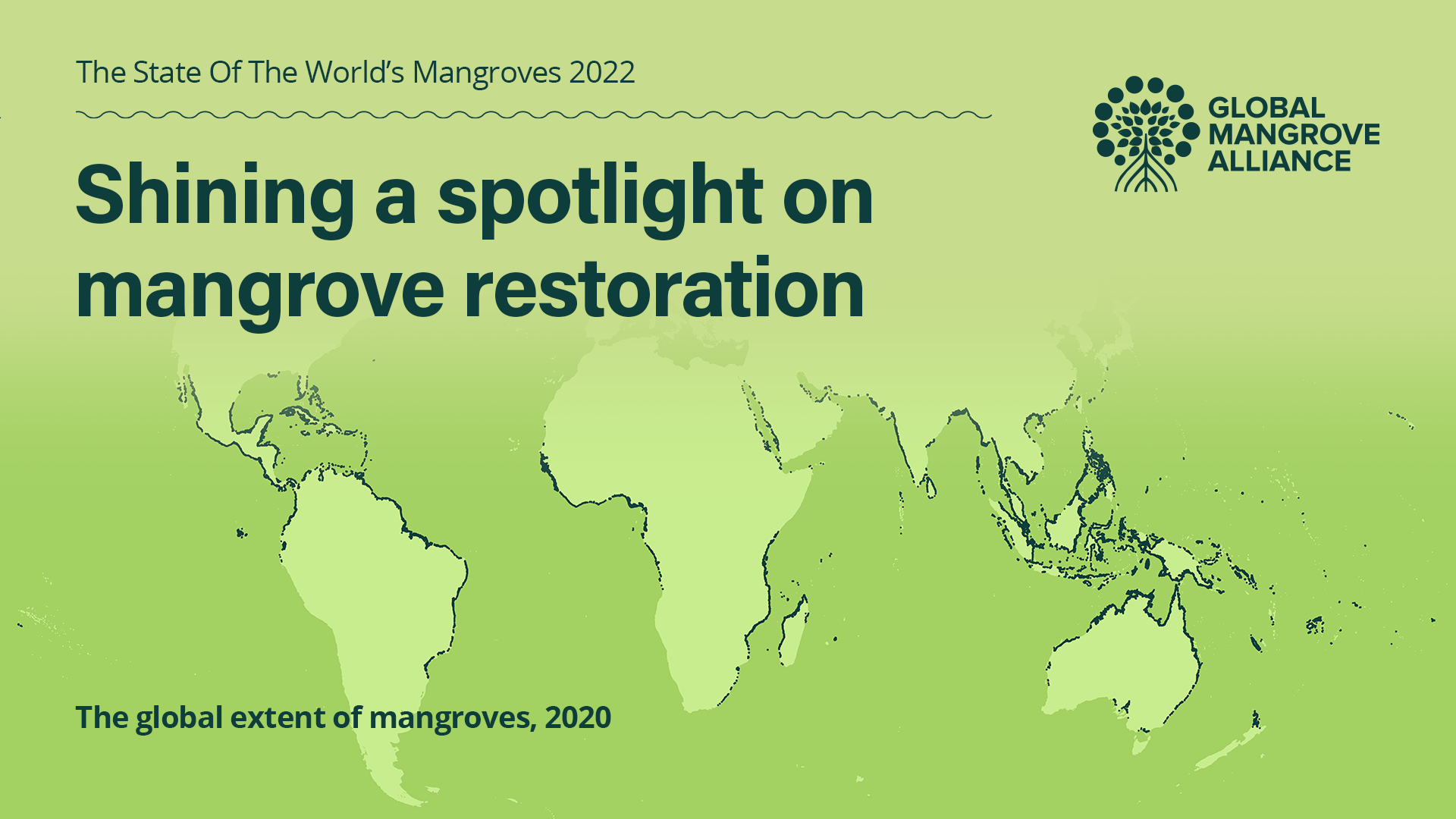The State of the World’s Mangroves 2022
Today the Global Mangrove Alliance (GMA) released their annual report, The State of the World’s Mangroves 2022, a compilation of the most current information available on what we know about mangrove forests and what’s being done to reverse the downward trends impacting the coastal trees and the local communities who depend on them. We now have access to more extensive and reliable knowledge via data updates to Global Mangrove Watch maps–the evidence base informing the Global Mangrove Alliance–that brings coverage from 2016 up to 2020. With this new insight, we can now say that there are 147,000km2of mangroves remaining worldwide, an area about the size of Bangladesh. The same maps show loss and gains over time. A net 5,245km2of mangrove forest has been lost since 1996, driven by a combination of direct human impacts such as clearance and conversion, but also by harder to manage changes driven by erosion, inundation, or storms. While average losses over the last decade have fallen to 0.04% per year and there have been considerable gains in river mouths and deltas, action is still a priority to halt further loss, protect what remains, and restore what has been lost. Determination to safeguard mangroves is growing at all levels of society but more can still be done. It is increasingly clear that national and local stakeholders will be the catalyst in implementing improved management, conservation, and restoration of mangroves. This understanding has led the GMA to develop a new initiative, National Chapters. Chapters in eight countries are now bringing together GMA members and local partners on the ground with the ambition to connect the broader GMA goals to a targeted local context.
According to Mark Spalding, Senior Marine Scientist for The Nature Conservancy, “The 2022 edition of The State of the World’s Mangroves describes a surge in our understanding of mangroves globally and multiple points of hope: mangrove loss is declining, we know more about protecting these ecosystems than ever before, and partnerships and global awareness are ever stronger. The tide has yet to turn on loss but we are dedicated to maintaining momentum to support mangrove forests to minimize the impacts of irreversible climate change and the wider biodiversity crisis.”
The report’s highlights:
•Preventing just 1% of mangrove loss results in two hundred million tons of carbon locked away. Restoration of losses since 1996 could safeguard carbon in soil and aboveground biomass equivalent to 1.27gigatons of CO2–equating to over 520 million barrels of oil, or the annual emissions of 49 million cars in the USA.
•The GMA goal of “restoring half” of the 8,183km2 of restorable area by 2030, particularly in Southeast Asia, could result in an additional 25 billion commercial marine fish and shellfish and benefit 4.1 million small-scale fishers and countless communities that rely on mangroves for their livelihoods.
•Mangroves prevent more than $65 billion in property damages from storms and reduce flood risk to some 15 million people every year
•Mangroves are the most efficient carbon capture and storage systems on the planet. They currently store carbon that’s equivalent to over 21 billion tons of CO2
The Global Mangrove Alliance released the report in anticipation of critical convenings including, New York climate week, the Ramsar Convention on Wetlands, the UNFCCC climate COP27, and Convention on Biological Diversity COP16. Alliance members are calling on local and national government leaders to accelerate their efforts to protect and restore mangroves and challenging the private sector to increase investment in keeping mangroves standing. Read the full report here (https://www.mangrovealliance.org/mangrove-forests/).



